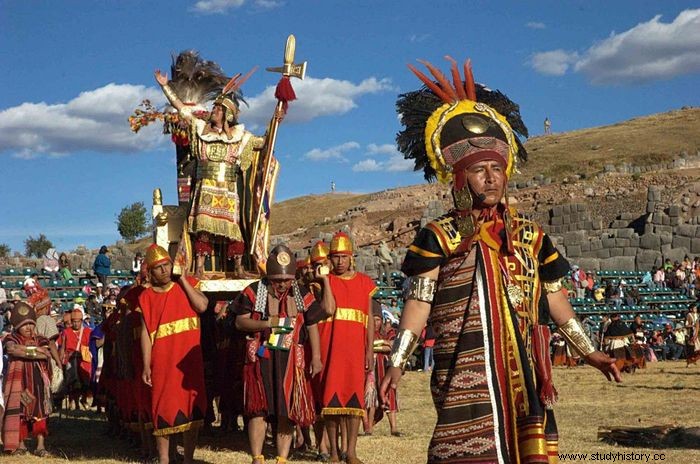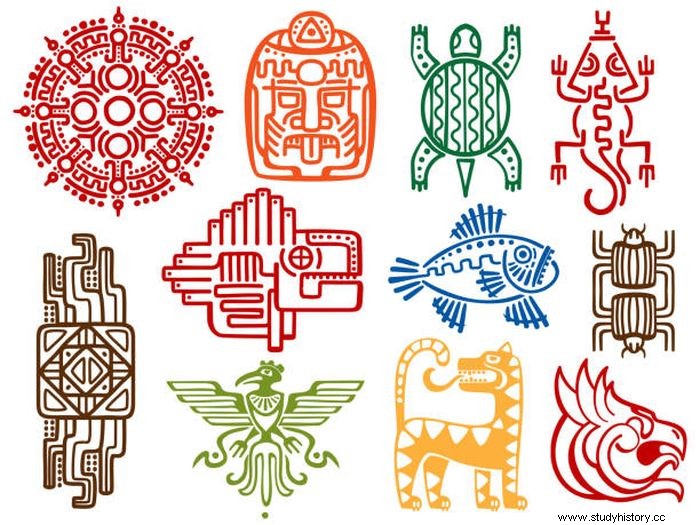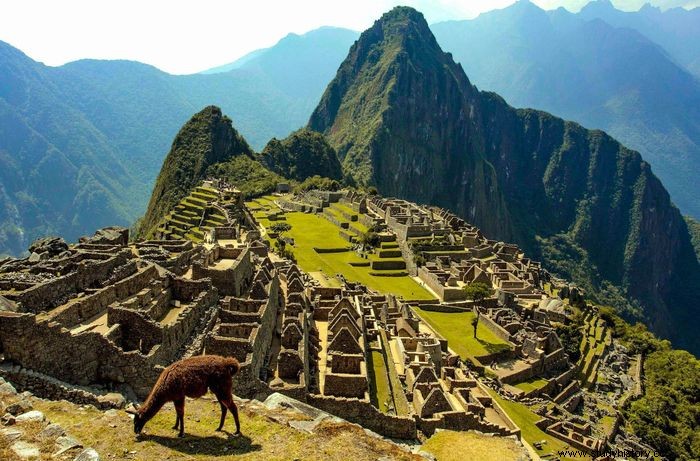During the 15th and early 16th centuries, the Inca civilization flourished in South America's Andes highlands. The worship of the sun, believed to represent the ancient father of the Inca people, was central to Inca religion and mythology. As a result, sun worship was closely linked to ancestor worship, and many Inca tales revolved around their origins. In addition, the Incas created their mythology to promote their civilization and support the notion that they were a superior race destined to rule over others.
The origins of the Incas
The Incas, based in Cuzco, Peru, were one of the many small communities in the Andean highlands in the 14th century. The Incas gradually expanded and absorbed neighboring peoples, first peacefully and then by conquest. Pachacuti, a great leader, became their ruler in 1438. He and his descendants expanded the Inca Empire into a vast empire that included southern Colombia, Chile, and parts of modern Bolivia and Argentina. Throughout their vast empire, the Incas constructed a network of roads and temples, castles and other public structures.
The Incas assimilated the myths and stories of the nations they conquered as their empire flourished. They often changed other people's past stories to give them a fresh, pro-Inca slant. Although they allowed their subjects to worship their gods, they believed that everyone in the empire should follow the imperial religion and worship the Inca gods. Since the Incas had no written language, they did not record their myths in writing. Instead, a group of professional storytellers and entertainers told the state's official history, including fact and fiction.
Faith of the Incas
Scientific study shows that the belief systems of the Incas were intertwined with the vision of the universe. Their stories show the movements of constellations, planets and planetary formations, all of which are linked to agricultural cycles.
It was especially important to the Incas, who relied on cyclical agricultural seasons linked to annual cycles and a much larger time cycle (every 800 years at a time). This method of maintaining time ensures cultural transmission of critical information in the face of regime transitions of societal disasters.
After Francisco Pizarro's conquest of Peru, colonial officials burned the Inca documents. Gary Urton suggested that Quipus may be a binary system capable of capturing phenological data. To this day, everything we know depends on what the priests wrote - the iconography of Inca ceramics and architecture and the myths and stories among the Andean aborigines.
Legends of the Incas

Manco Cápac was the founder of Peru's Inca dynasty and Cusco's Cusco dynasty. The mythology and history surrounding him are quite conflicting, especially those involving his reign in Cuzco and his origins. According to one account, he was the son of Viracocha. In another, the sun god Inti pulled him up from the depths of Lake Titicaca. On the other hand, commoners were not allowed to say the name Viracocha, which may explain why three basic stories were required instead of just one.
There were also many myths about Manco Cápac and his rise to power. In one legend, Manco Cápac and his brother Pacha Kamaq were the offspring of the sun god Intis. In addition, Manco Cápac was revered as the sun and fire god. In another tale, Manco Cápac was transported to Lake Titicaca with Mama Ocllo (and perhaps other siblings), where they emerged and lived on Isla Del Sol.
According to tradition, Manco Cápac and his siblings were brought to earth by the sun god. They came from the cave of Puma Orco with a golden stick known as 'tapac-yauri'. They were asked to build a sun temple where the staff had sunk into the earth to honor their father, the sun god Inti. During the journey, however, one of Manco's brothers was misled into returning to Puma Urqu and was either locked away or turned to ice because his wild and reckless behavior enraged the tribes they sought to dominate.
Manco Cápac was the son of Inca Viracocha, according to Inca Viracocha mythology. He and his brothers and sisters lived near Cusco at Paqariq Tampu, joining his people and the ten ayllu they encountered on their travels to conquer the Cusco Valley tribes. The golden staff, said to have been presented to Manco Cápac by his father, also mentions it. According to some versions of the tale, the young Manco betrayed his older brothers, murdered them, and became Cusco. Copacati is the lake goddess whose devotion was concentrated on Tiahuanaco. Copacati is a poison spitter, unlike longwing acid.
Gods of the Incas
The Incas, like the Romans, allowed the nations they assimilated into their empire to practice their religions. The gods worshiped by the peoples of the Inca Empire are listed below, with several of them having overlapping duties and jurisdictions. Unless otherwise stated, it is reasonable to assume that these were worshiped by different ayllus or worshiped in certain earlier states.
Faith and traditions
- Mama Uqllu was Manqu Qhapaq's sister and wife. She was said to have taught the Incas to spin.
- Mamaconas, who lived in temple sanctuaries, were related to nuns. They devoted their lives to Inti while also serving the Incas and priests. Young girls of aristocracy or outstanding beauty were taught as acllas for four years before becoming mamaconas or marrying Inca nobles. They are similar to the Roman Vestal Virgins, although the Inca civilization did not regard virginity as a virtue in the same way that Western nations have throughout history.
- According to one mythology, Unu Pachakuti was a massive flood sent by Viracocha to destroy the giants who built Tiwanaku.
- A Wak'a was a sacred object, such as a mummy or a mountain.
Significant places for the Incas
Inca cosmology was divided into three spatiotemporal levels or Pachas.
- Uku Pacha ("the lower world") existed below the surface of the earth.
- Kay Pacha represented the world we live in.
- Hanan Pacha ("upper world") referred to the world above us, where the sun and moon lived.
Nature and landscape were also important aspects of Inca mythology. Many important natural elements of the Inca Empire were linked to key Inca mythology and stories. Lake Titicaca, for example, a significant body of water on the Altiplano, was included in Inca belief as the primordial lake from which the world arose. Similarly, many famous Andean summits played important roles in Inca mythology. It is reflected in the mythology surrounding Mount Paxil, where humanity was said to have been born from kernels of corn strewn by the gods.
Terrestrial habitats were not the only ones important in mythology. The stars were often woven into Inca folklore and belief. Many constellations, for example, were given names and integrated into legends. Examples are the star formations of the great llama and the fox. Although it may not be related to a specific physical element, ambient sound was crucial in Inca mythology. For example, in Viracocha's creation story the sound of the god's voice is significant. Furthermore, because stories were passed down orally, the acoustics and sound of a place were crucial in Inca mythology. These examples highlight the importance of the environment in the creation and interpretation of Inca narratives.
Important symbols for the Incas

According to some modern authors, the Chakana (or Inca Cross, Chakana) is the three-stepped counterpart that symbolizes what is known in various myths as the Tree of Life and the World Tree. A shaman went in a trance through a central axis to the lower plane or underworld and the upper levels inhabited by the superior gods to investigate the causes of unhappiness on the earth plane. Totemic representations of the three layers are the snake, the puma and the condor. However, scientific research does not support the supposed meaning of the chakana symbol.
Animals in Inca mythology
Like other Native American societies, Inca society was strongly influenced by the local animal populations, which served as food, textiles, sources of transportation, and religious and cultural pillars. As a result, many Inca myths and legends involve or are entirely about an animal or group of animals. They are also about their connections with the gods, humans and the natural environment.
dogs
The Incas bred dogs for hunting and scouring, but not for religious reasons. The Huanca people, on the other hand, had a far deeper religious reason for eating dog meat, since Paria Caca, their god, in Inca mythology, was represented as eating only the dog after defeating another god, Huallallo Carhuincho, in a conflict. As a result, Huanca is known as "the dog-eating Huanca" in some regions of South America. Other parts of the empire resented this dog-eat-dog behavior.
There is also Alqollacta, or "Dog Town", which has statues of dogs representing the spirits of dogs that have died. People often saved bones and placed them by the sculptures to gain a higher position in the afterlife.
Dogs were once believed to be able to travel between life and death and see the souls of the dead. Furthermore, the Incan believed that disgruntled deceased spirits could appear to people as black dogs. According to reports, the Aymara people of Bolivia believed that dogs were related to death and incest. They believed that people who died had to cross an ocean to the afterlife in the ear or muzzle of a black dog. Furthermore, other accounts claim that women who sleep alone at night can become pregnant by ghosts, resulting in a child with dog's feet.
Bears
Although South America has only one species of bear (the spectacled bear, Tremarctus ornatus), the tale of The Bear's Wife and Children is well known among the Incans. The Andeans believed bears symbolized men's and women's sexual practices, and girls were warned about "bear rape". The floor is about a bear disguised as a man. The bear kidnaps a girl and brings her to his den, where he feeds and cares for her. A little later, she gives birth to two half-bear, half-human offspring.
The three are able to leave the cave and return to human civilization with the help of the children. The bear cubs are brought to the town's priest, who kills them several times, but can only kill the younger bear cub. The older bear triumphs over his trials and is tasked with fighting a doomed soul, whom he defeats and saves from damnation.
The soul bestows upon the bear his land and riches, and the bear-man, now fully mature, leaves human society as a white dove. This narrative can be understood as an Indian's emergency response to Latin American civilization. They find themselves more credible as this folklore becomes more popular after the Spanish conquest.
In addition to this tale, Ukuku, a half-bear, half-human entity, is said to be the only one capable of bringing ice from the top of mountains because they had the brains of men but the strength of bears. Ukuku clowns appear during Cuzco's Corpus Christi celebrations, where they make a pilgrimage to a local glacier and retire at night on the ice as a symbol of masculinity.
Foxes
The fox had a bad reputation among the Incas and the inhabitants of the Andes and was seen as a bad omen. Sacrifices to the gods included a variety of products and animals, including humans, but no foxes were ever observed. There are references in Inca mythology to gods being tricked by foxes. When the deity Cuniraya Viracocha was insulted by a fox, he said:"As for you, even when you lurk around and keep your distance, people will loathe you and say, 'That fox is a thief!'"
When they kill you, they will carelessly throw you away and your skin too”. In some stories, the fox is said to have tried to take the moon, but the moon held the fox close, resulting in the moon's spots. Finally, the fox plays a role in modern Andean civilization, where the howling of a fox in August is seen as a harbinger of good fortune.
The Incas had indigenous names for constellations and interstellar clouds (black nebulae) that could be observed from the southern hemisphere. For example, the fox (Atoq in Quechua) is the name of one of the Milky Way's black nebulae, and legends from the Andes, including the Incas, may allude to the dark nebulae rather than the animal.
Legacy of the Incas

Although the Inca Empire was destroyed by the Spanish, they did not exterminate them. Today, their descendants live in the Andean highlands. Many of them speak fluent Quechua, the Inca language. Andean peoples, such as the Incas, believe that high mountain peaks are sacred and make pilgrimages to them to ensure abundant crops and fertile herds. In the same way, people have continued the Inca tradition of making sacrifices to local gods at shrines and holy places scattered across the territory that formerly comprised the Inca Empire.
The Incas also left behind larger stone monuments. The walls of their temples can still be seen in Cuzco. In addition, forts and temples can be seen across the ancient empire. The hilltop complex known as Machu Picchu, where the Incas once worshiped their sun deity, is one of the most famous Inca structures. In 1912, the American explorer Hiram Bingham uncovered the remains of this huge temple and brought it to the attention of the outside world. As a result, Machu Picchu is becoming one of Peru's most popular tourist destinations.
the conclusion
The Incans believed that high mountain peaks were sacred and made pilgrimages to them to ensure abundant crops and fertile herds. In addition, they presented sacrifices to local gods at shrines and sacred sites scattered across their territory. The Incans really believed in many myths to keep their faith alive!
